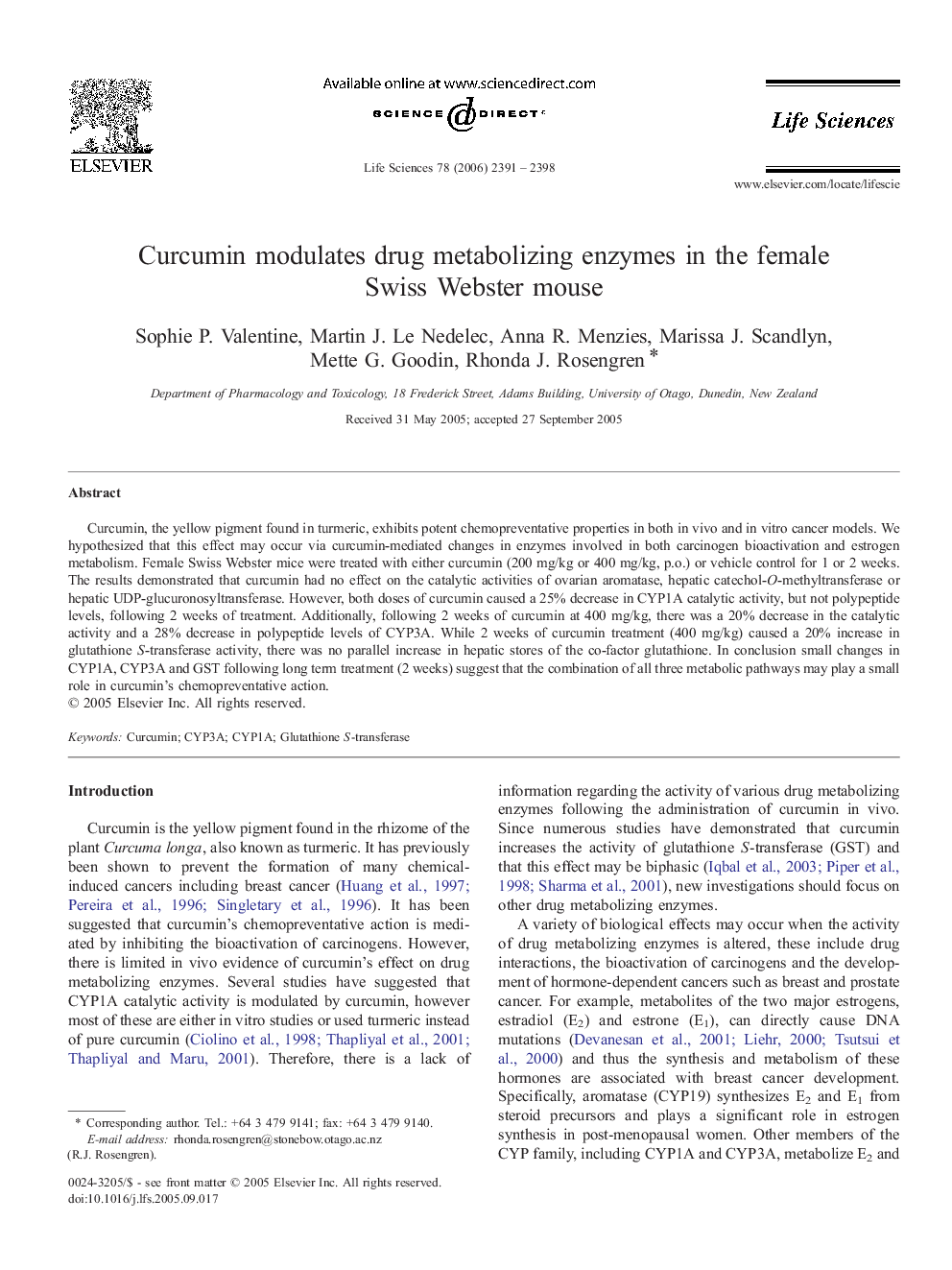| کد مقاله | کد نشریه | سال انتشار | مقاله انگلیسی | نسخه تمام متن |
|---|---|---|---|---|
| 2554304 | 1124961 | 2006 | 8 صفحه PDF | دانلود رایگان |

Curcumin, the yellow pigment found in turmeric, exhibits potent chemopreventative properties in both in vivo and in vitro cancer models. We hypothesized that this effect may occur via curcumin-mediated changes in enzymes involved in both carcinogen bioactivation and estrogen metabolism. Female Swiss Webster mice were treated with either curcumin (200 mg/kg or 400 mg/kg, p.o.) or vehicle control for 1 or 2 weeks. The results demonstrated that curcumin had no effect on the catalytic activities of ovarian aromatase, hepatic catechol-O-methyltransferase or hepatic UDP-glucuronosyltransferase. However, both doses of curcumin caused a 25% decrease in CYP1A catalytic activity, but not polypeptide levels, following 2 weeks of treatment. Additionally, following 2 weeks of curcumin at 400 mg/kg, there was a 20% decrease in the catalytic activity and a 28% decrease in polypeptide levels of CYP3A. While 2 weeks of curcumin treatment (400 mg/kg) caused a 20% increase in glutathione S-transferase activity, there was no parallel increase in hepatic stores of the co-factor glutathione. In conclusion small changes in CYP1A, CYP3A and GST following long term treatment (2 weeks) suggest that the combination of all three metabolic pathways may play a small role in curcumin's chemopreventative action.
Journal: Life Sciences - Volume 78, Issue 20, 11 April 2006, Pages 2391–2398